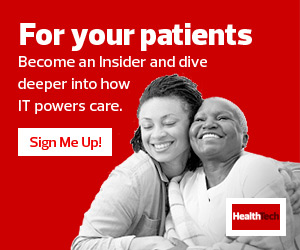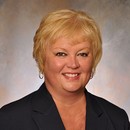Now, the position has evolved to also represent the patient voice in organizationwide initiatives forced on operational improvements and technology use.
“The scores are still important, but the change is not just chasing the scores,” says Susan Murphy, who has served as the chief experience and innovation officer at UChicago Medicine for the past seven years. “We’re trying to understand what patients are telling us through their feedback. It’s not just about whether we’re doing our work right. It’s having conversations with patients about their needs.”
Murphy has a background in nursing and, earlier in her career, worked with the Studer Group (now part of Huron Consulting) to develop frameworks for nursing leadership. In an interview with HealthTech, she discussed how the CXO role differs from other executive positions and how she is able to influence initiatives such as operational improvements and technology implementations.
HEALTHTECH: How does the CXO differ from other roles?
MURPHY: The CXO is shining a light on what care teams do every day, to show that the routine is remarkable. Being a nurse, I have the eye of the clinical team. I also have experience in cultivating culture, which I use to help create exceptional experiences for everyone, every day — patients as well as caregivers and their families.
I want everyone on our team to be enculturated into knowing that patients are our “true north,” and to be thinking about what we need to do to care for them. When leaders develop a strategic plan, I want them to always have the patients’ thoughts in their mind.
READ MORE: See how technology powers connections between patients and clinicians.
HEALTHTECH: What is your approach to process improvement?
MURPHY: My goal is to incorporate staff engagement and patient experience. I want to mentor our leaders, to help them understand the role they have in leading their teams through strength-based coaching.
For example, we were seeing long wait times in one of our blood labs, and it was having an impact downstream. We brought the staff together so the people who were doing the work would help create the solution.
We didn’t just focus on the problem. Yes, it was important to talk about cutting wait times, but we also highlighted the magnificent work that the blood lab does every day, and how fixing the process and developing a new strategy would help the lab do even more. Because we looked at the situation differently, the people who are most excited about the new process are the people doing the blood draws.
In the old days, we used to knock on people’s doors, sit down and tell them what to do. Now, we’re doing it differently, to shine a light on what they’re already doing well. We’re trying to make good behavior contagious.
HEALTHTECH: Where does patient experience extend beyond the four walls of the hospital?
MURPHY: One of the main things we focus on at UChicago Medicine is continuity of care — pre-care to intake to inpatient care to outpatient care. An important element of this is thinking about the patient as a consumer until they are in front of the caregiver in the hospital.
How can we use consumerism in a caring way to get them the care they need in various situations, or where they live? This shows that, as a health system, we care about a patient’s well-being, not just when they’re in the hospital.












